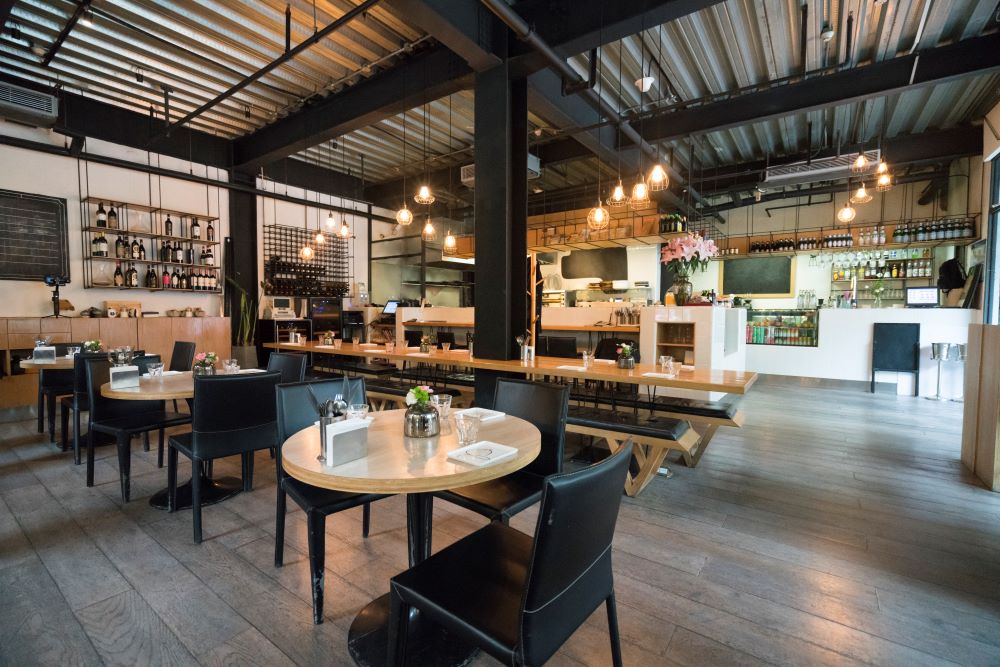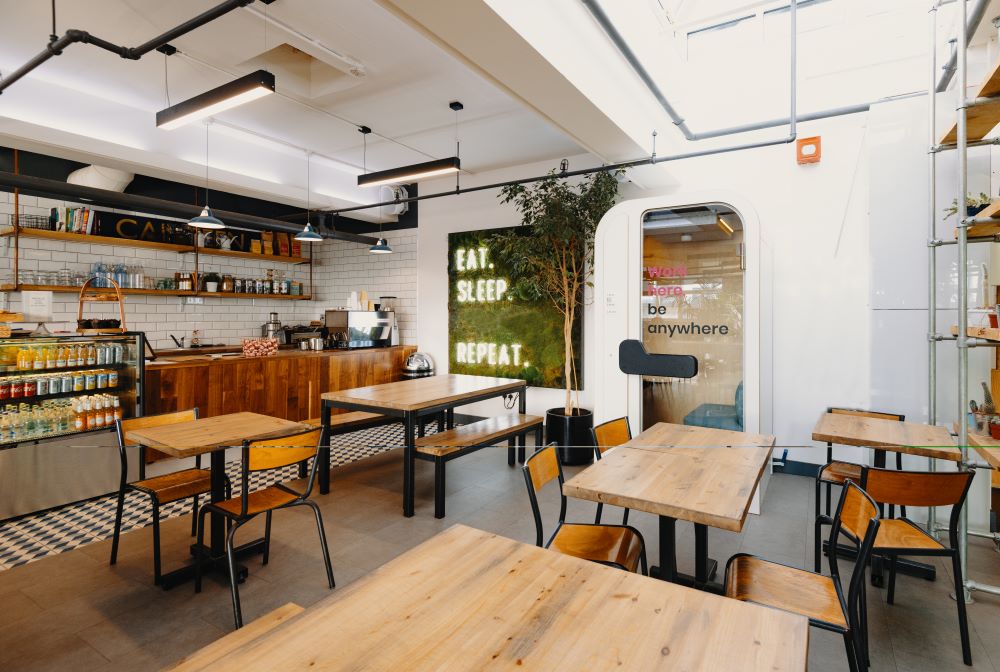In the dynamic world of restaurant business, every detail matters, and lighting stands out as a crucial element in creating an exceptional dining environment. This article delves into the significance of lighting design for restaurants, exploring its impact on customer experiences and addressing the question of why impeccable lighting is paramount in this industry.
Types of Restaurant Lighting
In the realm of restaurant design, meticulous curation and implementation of lighting schemes stand as pivotal factors in guaranteeing patrons a delightful dining experience. Presented below is an exhaustive delineation of the principal categories of restaurant lighting, elucidating their distinct applications and resultant effects:
General Lighting:
This form of lighting serves to uniformly illuminate the entire space, ensuring a pervasive brightness. Its objective is to craft a luminous and inviting ambiance that fosters a sense of relaxation and contentment among customers.
Task Lighting:
Task lighting is strategically employed to provide concentrated illumination in targeted work zones, such as dining tables and bars. By focusing light in these areas, the intent is to furnish customers with adequate luminosity during dining and other activities while concurrently cultivating an ambiance of privacy.
Decorative Lighting:
Dedicated to accentuating design and decorative elements within the space, decorative lighting is instrumental in providing a unique visual allure. The integration of various ornate fixtures such as chandeliers, wall lamps, or bespoke lighting installations aims to craft a distinctive atmosphere within the restaurant, concurrently shaping and reinforcing the establishment's brand identity.

Considerations of Lights for Restaurant
When embarking on the planning phase of lighting in a restaurant, it is paramount to underscore several key considerations that significantly influence the overall success of the design. The careful assessment and incorporation of these factors not only contribute to the aesthetic appeal but also play a crucial role in enhancing the overall customer experience and subsequent evaluations. Here are essential considerations to prioritize:
Ambiance and Atmosphere: Tailoring lighting to match the desired ambiance, whether it's a cozy, intimate setting or a vibrant, energetic atmosphere. Properly calibrated lighting directly influences the perceived atmosphere, affecting how customers feel and interact within the space.
Task Requirements: Identifying specific tasks in different areas, such as reading menus, enjoying meals, or engaging in conversations, and ensuring the lighting meets these functional needs.Well-designed task lighting enhances functionality, contributing to a seamless and enjoyable dining experience.
Color Rendering: Evaluating the
color rendering index (CRI) of light sources to ensure accurate representation of colors, particularly crucial in a restaurant where food presentation is central.High-quality color rendering fosters an environment where the vividness and attractiveness of dishes are accentuated, positively influencing customer perceptions.
Energy Efficiency: Incorporating energy-efficient lighting solutions, such as LED technology, to not only reduce environmental impact but also minimize operational costs.Sustainable and cost-effective lighting solutions align with contemporary values and contribute to long-term operational efficiency.
Flexibility and Control: Dimmable lighting systems that offer flexibility and control, allowing adjustments based on different dayparts or events.Adaptive lighting enhances the adaptability of the restaurant environment, providing an optimal setting for diverse occasions and customer preferences.
Branding and Image: Aligning lighting choices with the brand identity and overall theme of the restaurant. Consistent and well-aligned lighting reinforces the establishment's image, contributing to a cohesive and memorable customer experience.
Customer Comfort: Prioritizing customer comfort by avoiding glare, ensuring balanced lighting levels, and creating a visually pleasing environment.A comfortable and visually appealing setting encourages prolonged stays, positive reviews, and repeat patronage.
Lighting Ideas for Different Areas in a Restaurant
Achieving the perfect lighting in a restaurant involves tailoring illumination to suit various areas, each with its unique function and ambiance requirements. Here's a detailed exploration of the optimal lighting needs for different sections, including the entrance, terrace, dining area, workspace, and bar. Additionally, we'll delve into the selection of different light sources, encompassing ambient lighting, spotlights, and accent lighting.
Entrance: Soft and welcoming ambient lighting at the entrance creates a positive first impression.Utilize decorative fixtures or wall sconces to highlight the entrance without overwhelming.
Terrace: Incorporate a blend of ambient and task lighting for versatility. Warm, subdued lighting creates an inviting outdoor atmosphere. Weather-resistant fixtures and dimmable lights offer adaptability for changing outdoor conditions and evening ambiances.
Dining Area: Balanced ambient lighting with additional focused task lighting on each table. Pendant lights or chandeliers can add a touch of elegance. Adjustable lighting to accommodate different times of day and create a comfortable, intimate dining environment.
Workspace: Cool white task lighting in work areas enhances visibility. Transitional lighting zones between the kitchen and dining area help the eyes adjust. LED technology provides efficient and localized lighting without compromising the overall ambiance.
Bar: Differentiated lighting, such as spotlights or pendant lights, can illuminate the bar counter and display areas. LED strip lights offer versatility and can be applied creatively, enhancing the bar's visual appeal.

LED Lighting Ideas for Restaurant
In the quest for an energy-efficient and versatile lighting solution, LED technology emerges as a standout choice for various areas within a restaurant. Here are recommendations for LED products that cater to different needs:
Downlights: Perfect for providing ambient lighting in entrances or general spaces. Consider high-quality
LED downlights with adjustable brightness to set the desired mood.
Panel Lights: Ideal for creating uniform ambient lighting in larger areas like dining spaces. Opt for slim and sleek LED panel lights that offer even illumination and can be dimmed for versatility.
Tube Lights: Efficient for task lighting in workspaces, such as kitchen areas or service counters. Choose
LED tube lights known for their energy efficiency, long lifespan, and consistent brightness.
LED Strip Lights: Versatile for accentuating features in the bar area or adding a creative touch. Select customizable LED strip lights with a wide range of colors and adjustable brightness for a dynamic ambiance.
By incorporating these LED lighting products strategically, a restaurant can not only enhance its visual appeal but also benefit from energy savings, durability, and the flexibility to create diverse atmospheres across different areas. The longevity and adaptability of LED technology make it an excellent choice for achieving both functional and aesthetic lighting goals in a restaurant setting.
Conclusion
In the realm of restaurant design, lighting emerges as the key orchestrator, weaving together ambiance, function, and customer delight. From the nuanced categories of general, task, and decorative lighting to considerations of ambiance, color rendering, and energy efficiency, each aspect plays a vital role in crafting a perfect dining experience. If you are still looking for the best solution, contact LEDVANCE for the best lighting design.



